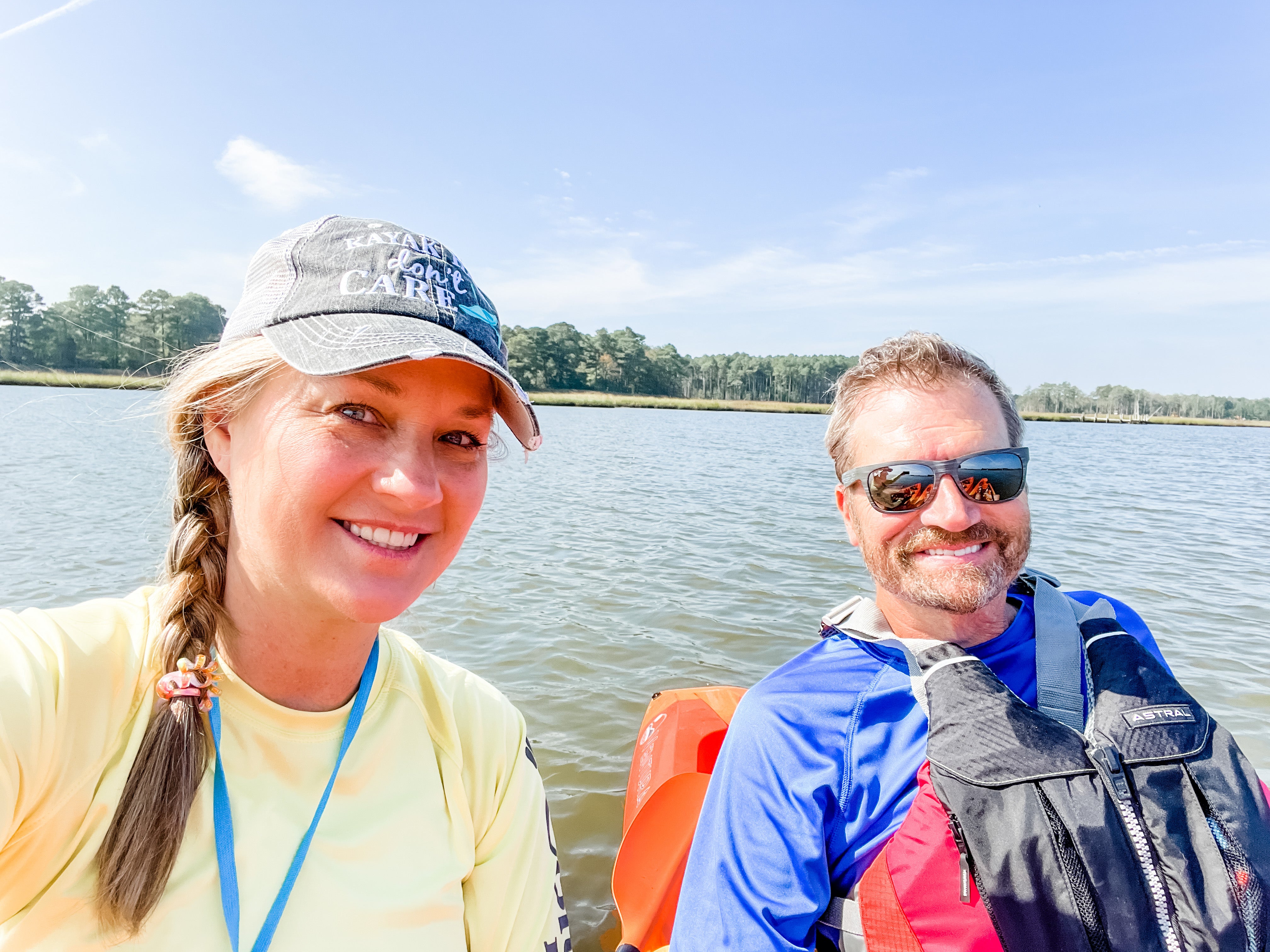
Serenity on the Water: How Kayaking Can Transform Your Well-being
| Sherri Blum
Have you ever thought about trading your gym membership for a kayak? It might seem like an unusual swap, but hear me out. Kayaking, apart from being a thrilling outdoor activity, also packs a powerful punch of physical and mental health benefits. Let's dive in to explore the amazing world of kayaking, shall we?
The Physical Benefits of Kayaking
To appreciate kayaking's physical benefits, it's helpful to understand the biomechanics of this sport. Kayaking is much more than an upper-body workout—it’s a symphony of coordinated movements that engage muscles from your head to toe.
A Full-Body Workout
While it's easy to think that kayaking is all about arm strength, that's just a piece of the puzzle. It's a full-body workout that involves your arms, shoulders, back, core, and even your legs.
When you perform a kayak stroke, you start the motion with the rotation of your torso, involving your abdominal and lower back muscles. The power is then transferred to your shoulders and arms, which guide the paddle through the water. Moreover, your legs are far from idle. They provide stability, help control the kayak's direction, and add power to your paddle stroke by pushing against the kayak's interior.
And the best part? Unlike most gym workouts, you won't even notice how hard you're working out. The excitement and serenity of being on the water and the joy of exploration make it a truly engaging exercise.
Improving Cardiovascular Fitness
A consistent paddling rhythm gets your heart pumping and your blood flowing. Kayaking is, at its core, an aerobic exercise—a form of cardio workout. As with any cardio exercise, regular practice increases your heart's endurance and capacity to deliver oxygen to your muscles.
Even a moderate kayaking trip can significantly contribute to your weekly cardiovascular exercise goals. According to the American Heart Association, adults should aim for at least 150 minutes per week of moderate-intensity aerobic activity or 75 minutes per week of vigorous aerobic activity, and kayaking can surely help you achieve that.
A Gentle Approach to Joint Health
Many popular forms of exercise—such as running or certain team sports—can be hard on your joints. Kayaking, however, is a low-impact activity. This means it puts minimal stress on your joints while still providing a solid workout.
Paddling in a kayak is a smooth, repetitive motion, unlike the jarring impact of running. This makes it an ideal sport for people of all ages, including those with joint concerns or those who are rehabilitating from injuries. It's also a perfect exercise option for those who want to maintain an active lifestyle while protecting their joint health.
Remember, every body is unique, and what works best for one person may not be ideal for another. So, always consider your personal fitness goals, abilities, and restrictions when choosing an activity. And of course, consult with a healthcare professional or a fitness expert if you're unsure. If you're looking for a fun, full-body, heart-healthy, joint-friendly workout, kayaking might be just the ticket for you.
The Mental Health Benefits of Kayaking
We often think of exercise as a way to maintain physical health, but it's equally essential for mental well-being. Kayaking, in particular, offers unique mental health benefits thanks to its immersive nature and meditative qualities.
Nature as a Stress Reliever
Research consistently shows that spending time in nature significantly improves mood and reduces stress. As a kayaker, you'll often find yourself surrounded by breathtaking natural landscapes—sparkling bodies of water, diverse wildlife, stunning sunrises or sunsets. This immersion in natural beauty can trigger what psychologists refer to as 'awe,' a state of being that can lead to a deep sense of calm and wellbeing.
What's more, nature can also serve as a gentle distraction from life's stresses. When you're out on the water, it's hard to dwell on that tough day at work or a long to-do list. Instead, your attention shifts to the rhythm of your paddling, the sound of the water, and the sights around you. This shift in focus can help break the cycle of stress and negative thinking.
The Meditative Aspect of Kayaking
There's a rhythmic, repetitive nature to kayaking that is inherently meditative. The cycle of strokes and the steadiness of your movement require a certain level of concentration that can help clear your mind of clutter and bring you into the present moment.
This mindful engagement with the present is a cornerstone of meditation, and has been linked to a host of mental health benefits, including reduced anxiety and improved mood. The consistent rhythm of your paddling can help create a mental state similar to that achieved during mindfulness meditation, leading to feelings of calm and relaxation.
Boosting Self-Confidence and Mental Resilience
Kayaking also provides plenty of opportunities for personal achievement. Learning to control your kayak, tackling challenging conditions, or navigating a new route all require skill and tenacity. Each success along your kayaking journey can boost your self-confidence and sense of self-efficacy.
Moreover, challenging yourself through kayaking helps build mental resilience. Mental resilience is the ability to mentally or emotionally cope with a crisis or return to pre-crisis status quickly. Overcoming challenges and navigating obstacles on the water can equip you with the mental strength to deal with stressors or difficulties in other areas of your life.
Kayaking is not just a physical endeavor; it's a deeply holistic practice with profound mental health benefits. From the meditative calm of rhythmic paddling to the resilience built through overcoming challenges, kayaking offers a uniquely effective approach to mental wellbeing.
Kayaking and Mindfulness
You've heard about mindfulness, right? It's the practice of being fully present in the moment, aware of your surroundings and feelings, without judgment. And kayaking is an excellent way to cultivate this beneficial mindset.
As you paddle, you're engaging with your surroundings in a direct, focused way. You're aware of the rhythm of your strokes, the feel of the water against your skin, the sound of wildlife around you. It's a holistic sensory experience that pulls you into the present moment, facilitating a deep sense of peace and connection.
How to Get Started with Kayaking
Now that we've talked about the why, let's talk about the how. How can you start your kayaking journey?
Look for local kayaking clubs or outdoor recreational groups that offer lessons or rentals. Many organizations provide beginners with basic kayaking instruction and safety guidelines. It's always best to start with calm waters and then gradually challenge yourself as you build your skills and confidence.
There are organizations with the specific goal of assisting veterans and police officers with the mental health benefits of kayaking. Often these heroes suffer from PTSD. Research shows that kayaking and kayak fishing can help those suffering from PTSD with mental health benefits. One such organization is Heroes on the Water. With chapters throughout the nation, Heroes on the Water focuses on kayak fishing for for military personnel and first responders to provide camaraderie, healing and a wide variety of health benefits to our nation's heroes. Staffed by volunteers, there is no cost to the participants and their families.
If you aren't interested in joining an organization, but have accessibility concerns, there are inventions in the works to make kayaking more accessible. The Kayak Jack boat lift, for example, helps single users get a kayak onto a roof rack and off again with ease. While your safety must be of concern at all times, don't let issues with getting from point A to point B stop you. Where there is a will, there is a way!
Remember, safety is paramount. Always wear a life vest, and until you're a seasoned kayaker, try to paddle with a group or an experienced companion. Be aware of local weather and water conditions before you head out.
Conclusion
There you have it, my friend. Kayaking isn't just an adventure—it's a pathway to improved physical and mental well-being. It provides a holistic workout, connects you with nature, and enhances your mindfulness skills. So why not give it a try? Swap the gym for the great outdoors and let the healing power of kayaking work its magic on you. Happy paddling!

Leave a comment
Your email address will not be published.